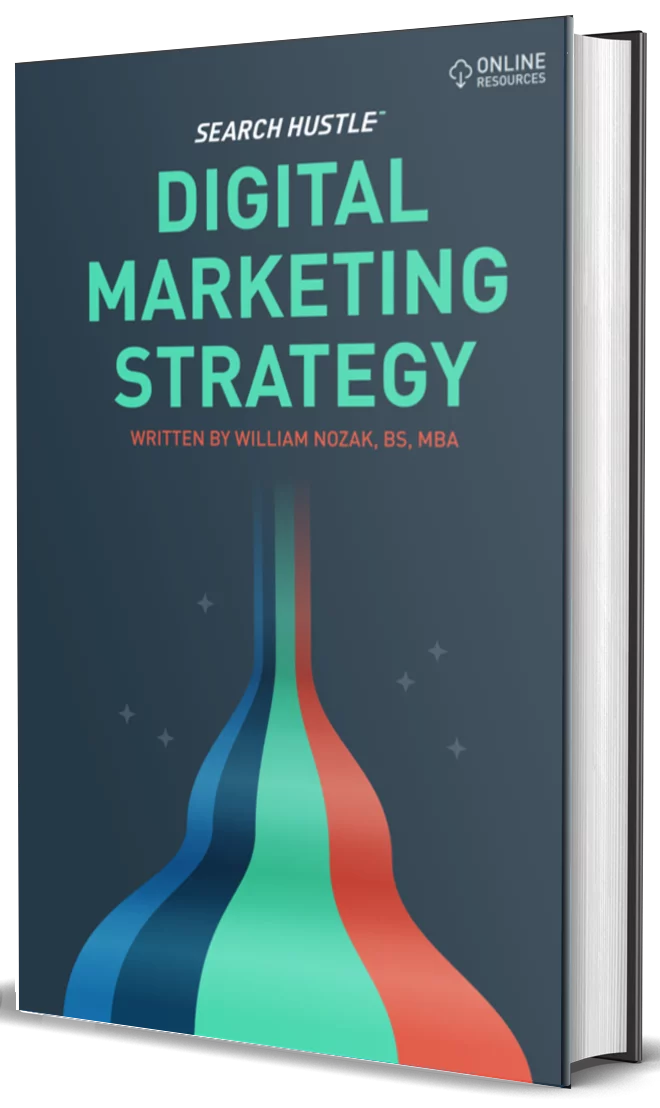User Centered Web Design
Learn how to effectively utilize user-centered web design with Search Hustle.
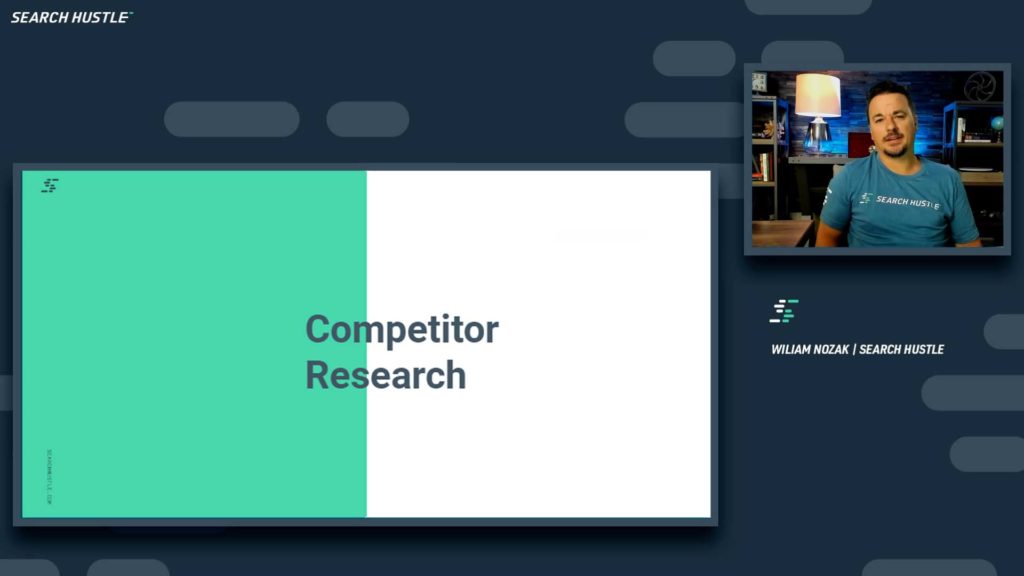
When designing a site, one of the primary focuses should be on user-centered web design. You’ll neglect the user if you forget this important aspect and instead only emphasize pretty aesthetics and a fancy interface.
User experience (UX) is one of the most important parts of having a successful business website. User-centered web design ensures the site’s features are useful and easy to navigate.
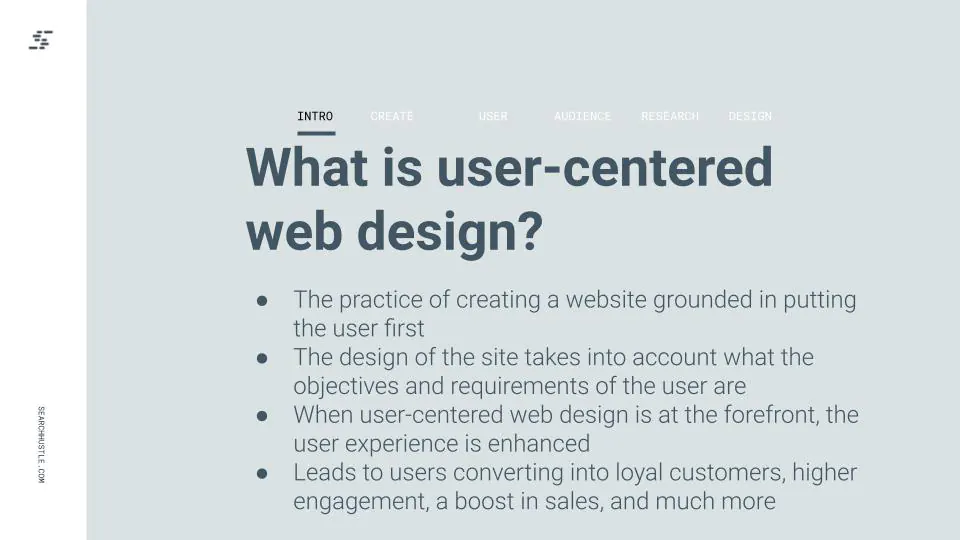
What is user-centered web design?
User-centered web design is creating a website grounded in putting the user first. In short, the site’s design accounts for the user’s objectives and requirements.
No matter how amazing a company’s products or services are, potential customers won’t hang around if the website has an interface that’s difficult to use or pages that lag. Even the most visually-appealing website is meaningless if users struggle to use it.
When user-centered web design is at the forefront, the user experience is enhanced. In turn, this leads to users converting into loyal customers, higher engagement, a boost in sales, and much more.
When user-centered web design is at the forefront, the user experience is enhanced. In turn, this leads to users converting into loyal customers, higher engagement, a boost in sales, and much more.
Designing with the user in mind, not yourself
The first step to designing a user-centered website is understanding current and potential users. This will ensure consumers are put at the center of every design decision.
- What will users expect from the website?
- Why are they visiting the website?
- How much time will users spend on certain pages, and what actions will they take?
Find the answers to these questions, and you can create a user-centered website.
Make it easy for the user to navigate
Site navigation should be simple and easy. If a person visits the website and can’t find the information they want or finds the interface confusing, they’ll bounce. This can lead to a loss in positioning, as the bounce rate affects this.
In addition to clear navigation, site responsiveness and page load times should be fast. Remember that almost 60% of all online searches are done on a mobile device. The business website should work fast on all devices and look good on all screen sizes.
Write simple, concise copy
The website copy is what helps bridge communication and intended actions. Sentences should be short and simple, so the message comes across as naturally as possible. Copy should be informative, entertaining, or a mix of both. In turn, the copy serves to help steer the user toward a clear goal, such as signing up for a newsletter or making a purchase.
Communicate with the user
To achieve the desired effect from users on certain pages, be it downloading a free e-book or adding a product to their online cart, information must be quick and easy to find. When designing a website, remember that users visit to achieve a specific purpose.
If users struggle to find what they’re looking for, they’ll inevitably become frustrated and leave. To avoid this, offer help and guidance on the site to show them where to get what they need. This can be in the form of internal links within the copy or navigation links on the sidebar.
If a user struggles to find what they’re looking for, it’s inevitable they’ll become frustrated and leave. To avoid this, offer help and guidance on the site to show where to go to attain the information they’re after. This can be in the form of internal links within the copy, navigation links on the sidebar, etc.
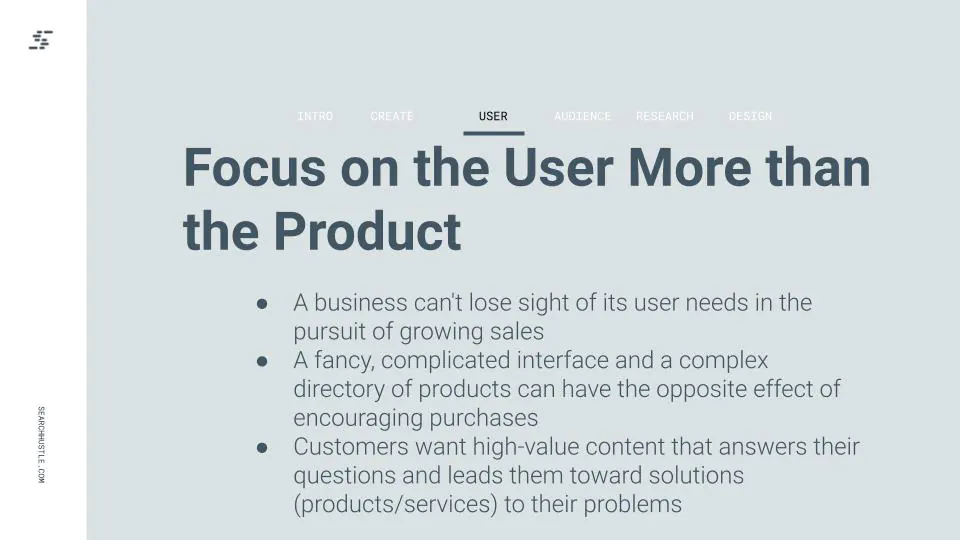
Focus on the user more than the product
Every business wants to sell its products. However, a company cannot lose sight of its users’ needs in the pursuit of growth.
A fancy, complicated interface and a complex directory of products will have the opposite effect of encouraging purchases. Customers seek high-value content that answers their questions and leads them toward solutions to their problems.
Understand your audience
To accomplish a user-centered web design, start with the target audience. This means you need to know what type of people are interested in using the business’s products or services.
This is where buyer personas come in. A buyer persona can help you to gain a deeper understanding of the target audience. Buyer personas are mini profiles that can display the characteristics of both current and ideal users.
Use the following questions to help develop buyer personas:
- What is the gender, age, occupation, relationship status, location, and personality traits of the user?
- What needs does the user have?
- What device does the user make use of to access the website?
- For what purpose does the user visit the website?
- What social media platforms do users utilize, and how often do they check them?
- What does the user do during their leisure time?
Research the needs of your audience
Using surveys is an excellent way to discover users’ needs and wants.
If a customer base already exists and you plan to redesign the website, send a targeted questionnaire. Minimally watch recordings, view heatmaps, and analyze aggregated data. Garnering user feedback and data analysis is the best way to understand a user’s needs and where the current development might fall short.
If an extensive customer base doesn’t yet exist for the business, then you can create a web page with a survey for users to take. Make use of social media to help advertise the survey and direct people toward the page to complete it.
Design according to your research
Once you’ve gathered all the pertinent information regarding current and potential users, it’s time to consider the website’s information architecture. This examines how information is presented on the website and impacts functionality and usability.
The navigation of the website should create a positive experience for the user. This means it shouldn’t take them long or involve them expending too much mental effort to find the information they’re after. Similar content should be grouped, and there should be a natural progression and flow to the steps a user takes to achieve a specific goal.
Tools
A website needs to offer the best user experience possible to keep engagement high. If a page takes too long to load, then the odds are the user will return to Google and find a different site to visit. If this happens too often, Google may assume your website doesn’t offer relevant content and could reduce your ranking.
That’s why it’s important to test the speed of the website. There are many tools out there that offer this option, like Pagespeed Insights or web page Test, Pingdom, or GTMetrix.
It isn’t just loading speed that can hurt your dwell time and rankings, though. If a website has clunky navigation or overly fancy fonts that make it difficult to read, that will also impact how long visitors hang around.
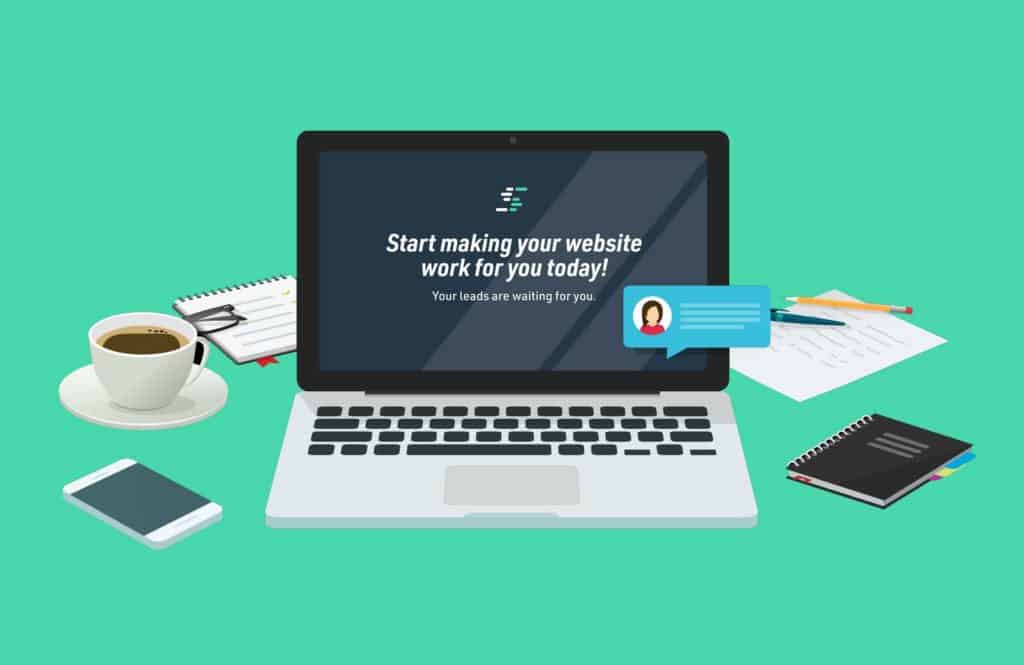
Ready to Take Your Search Hustle Further?


